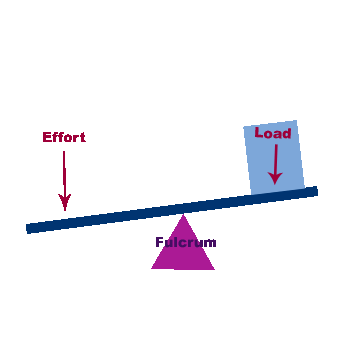

The lever is one of the six
kinds of simple machines.
Simple machines are used every day to help make moving objects
easier. A lever consists of a bar that
rotates around a pivot point, which is called the fulcrum (

When
the load is close to the
fulcrum and the effort is far away from the fulcrum, you get to use
less force to move the object. When the effort is close the
fulcrum and the load is far away from the fulcrum, you have to use more
force to move the object, but the object moves a farther distance
faster (Griffin, 2005). There are three classes of levers.
Each lever is different because where the fulcrum, effort, and load are
placed are different for each one.
Go
to these next
web pages to keep on learning about the different classes of levers:
| Class 1 Levers |
Class 2 Levers |
Class 3 Levers |